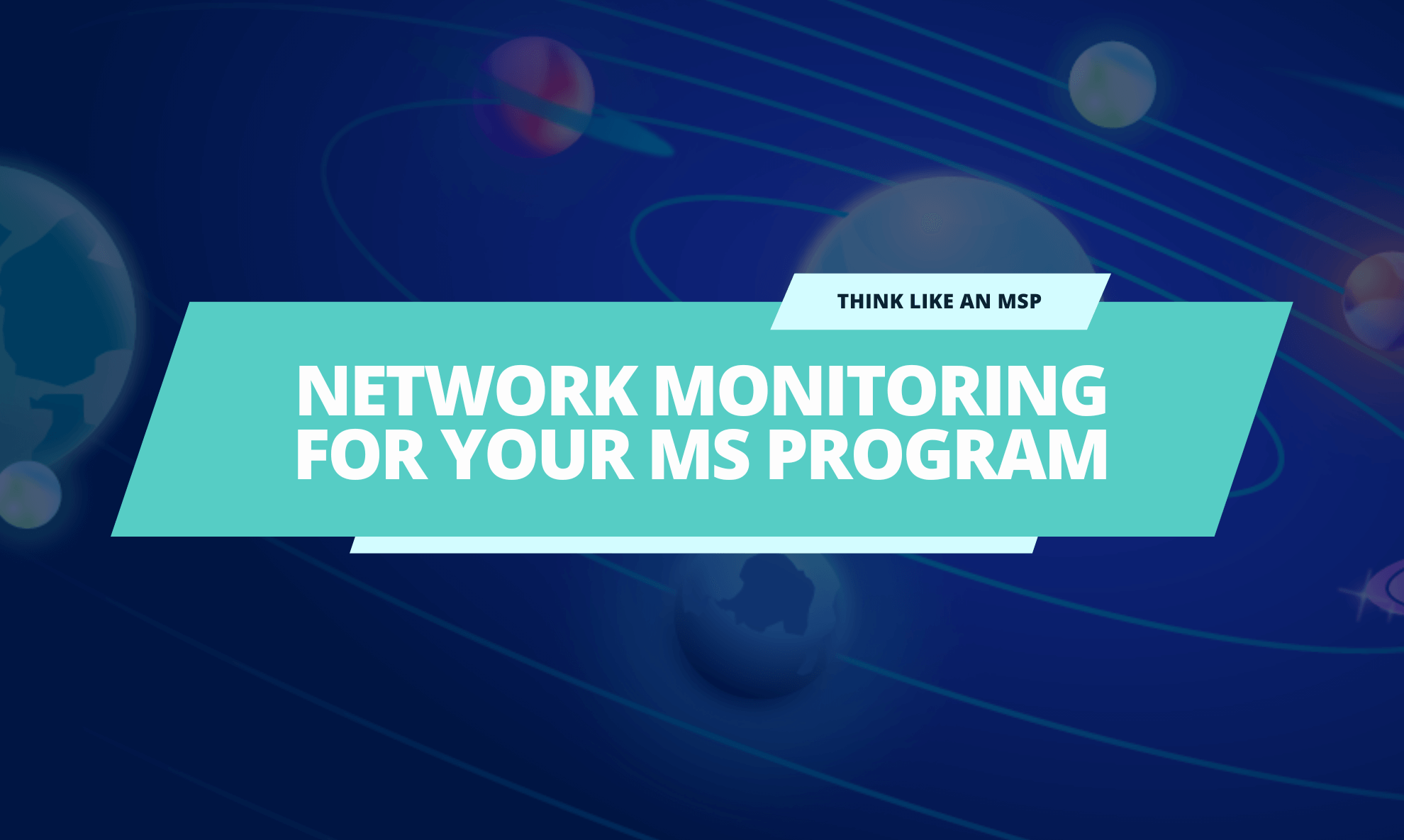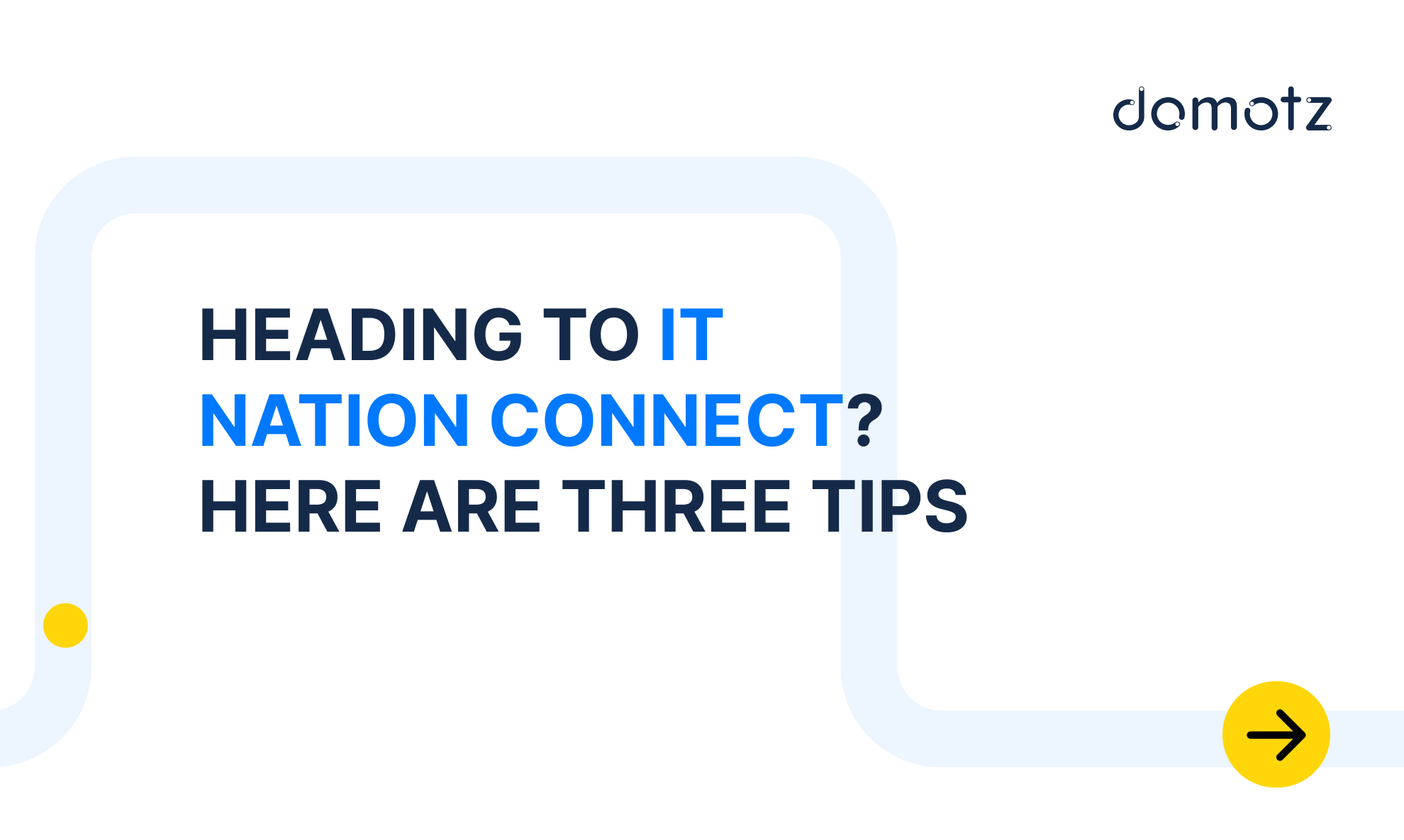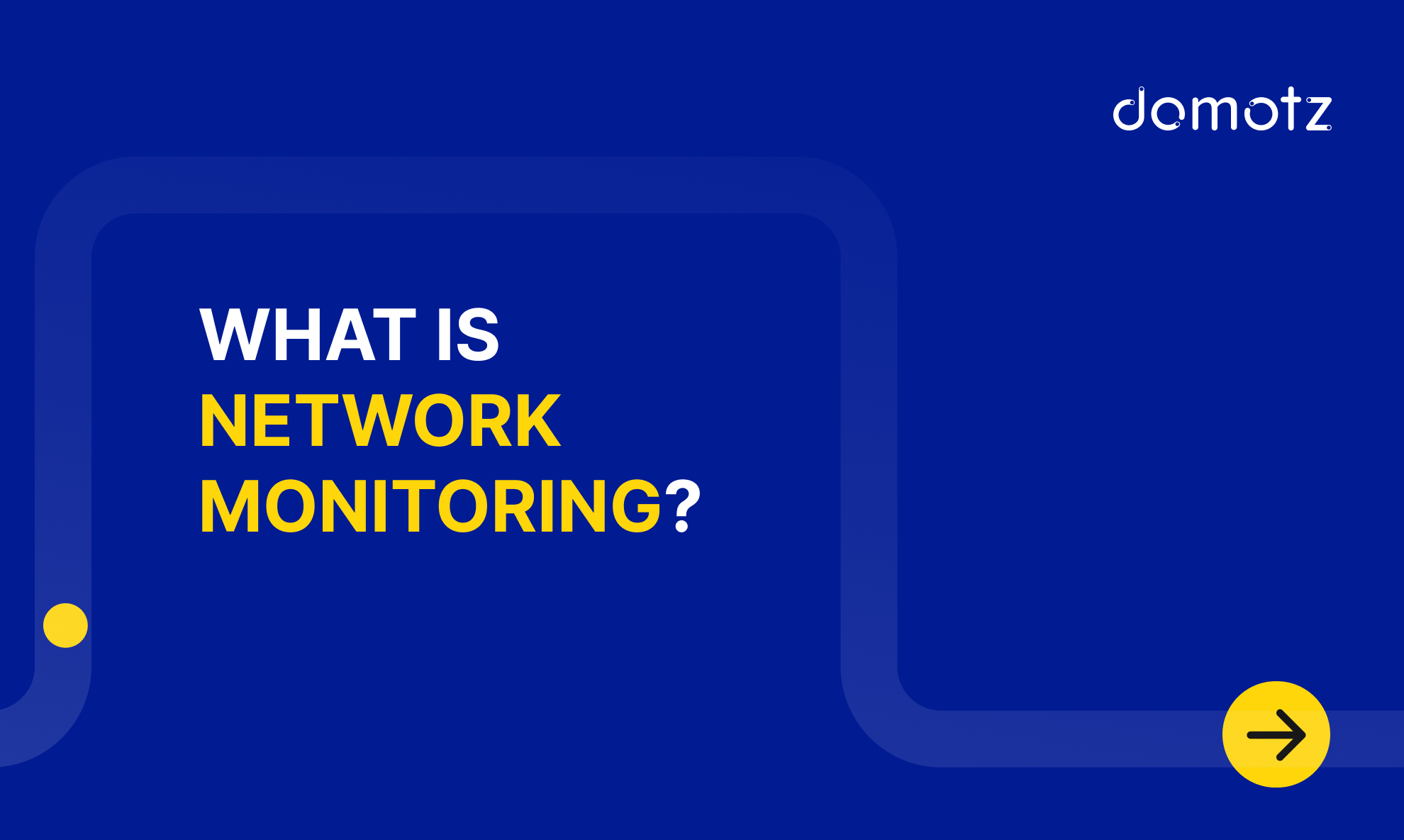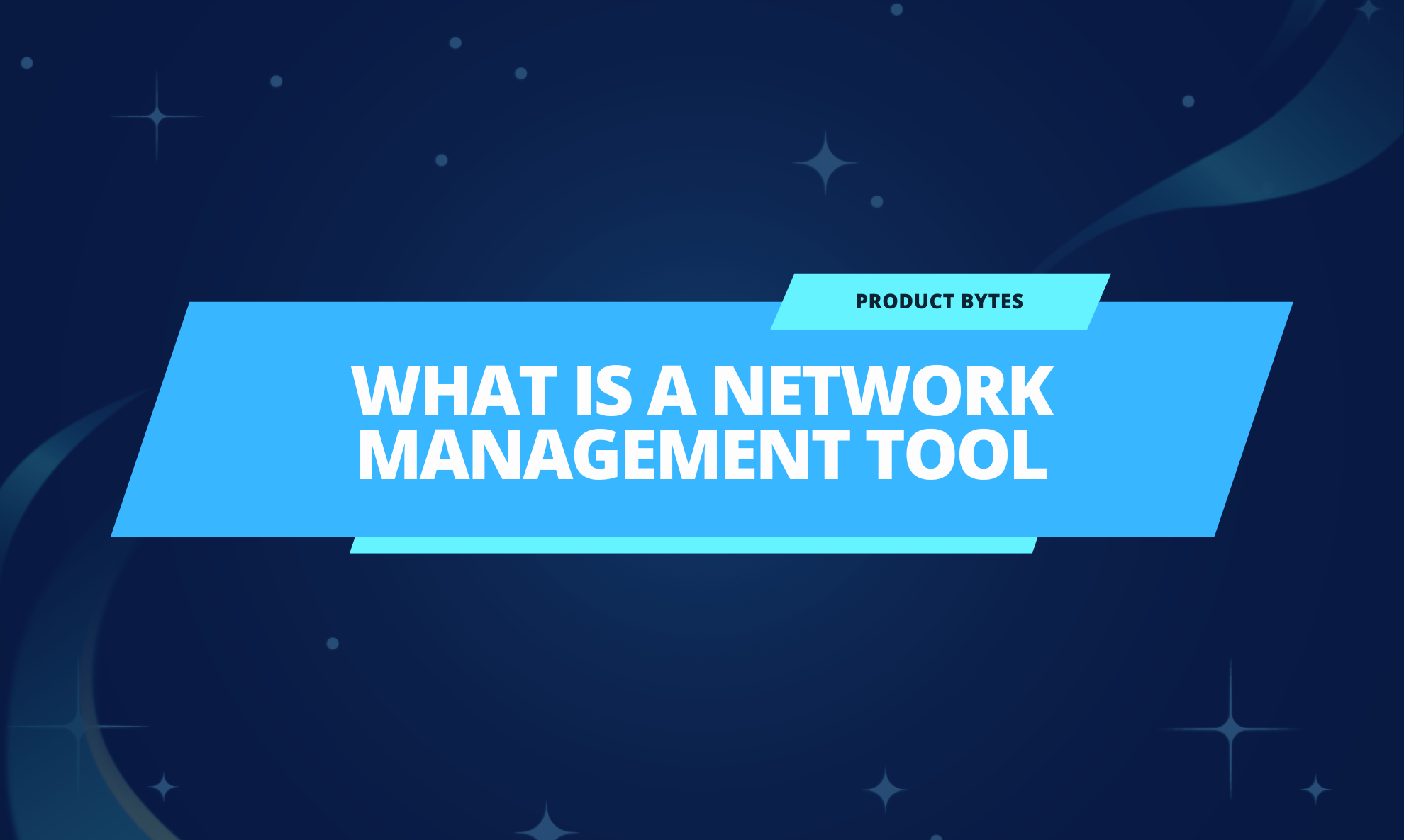How an NMS supports your Managed Services Program
We don’t often consider sales and increasing revenues when we think of network monitoring. That’s why we wanted to focus some content on how network monitoring can help you with your managed services program and sales processes.
Helping you increase your revenues, close more contracts and win new customers is something we’re passionate about. Ultimately, we want Domotz to go far beyond network monitoring. We’ll tell you more – we want our software to help your business become more profitable and efficient.
So let’s take a moment to think about how network monitoring can help you with managed services.
In June, our webinar with Revenueify on how network monitoring can help your managed services sales process discussed the intersection of sales and network monitoring. Moreover, we deeply explored how an NMS can support your managed services program.
Read on for the key takeaways from the webinar about network monitoring and how these tools fit into your sales process for managed services. You might also find out onboarding new networks checklist template handy as well.
What is a Managed Service?
To frame the argument for how network monitoring can help sell managed services, let’s spend one moment discussing what managed services are.
In short, Managed Services is outsourcing a function or service to improve operations and cut expenses. Your customers invest in their core business and drive internal revenue while the experts (like you) manage the systems.
However, your customers and the businesses you work with are not in the business of managing services.
Thus, they look at managed services differently than you. Learn more about what an MSP is and does.
Why do Organizations buy Managed Services?
Your customers are outside the business of managed services. Instead, they are using the investment as a platform to perpetuate their business growth.
Let’s now look at why organizations buy managed services. Ultimately, before diving into selling managed services, it’s essential to understand what managed services are and why your customers are interested in investing in them.
Here are some of the top reasons organizations invest in managed services.
- Predictable low cost: Your customers can adopt your managed services and fully understand the costs without investing in an IT team. Building an efficient IT team can be hugely costly to your customers.
- Scalability: Outsourcing IT provides your customers with a way to scale without considerable investments in IT.
- Minimized downtime: Investing in managed services means less downtime for your customers.
- A preventative approach: Using managed services can help your customers prevent issues.
- Proven expert: Instead of hiring an entire team, your customers can use proven experts in technology.
- Narrowed business focus: Investing in managed services allows your customers to focus more on their core business areas.
- Data compliance: Your customers can maintain data compliance by leveraging your services because you have expertise in this field.
- 24/7 faster support: Utilizing managed services enables your customers to access more and quicker support.
- New technology: Having a third-party expert in technology allows your customers to access all the latest technology.
- Reduced risk: Investing in managed services means less risk for your customers.
- Focused energy: Your customers can focus on what they do best instead of on IT.
Investing in managed services helps your customers save money and time and focus on their core business. Moreover, they do not have to spend precious time worrying about technology. They benefit from efficient IT, compliance, reduced risks, and enhanced security for lower costs. Investing in managed services is a strategic decision for many organizations.
How to Communicate the Value using the Bowtie Funnel

Now that we understand what managed services are and why customers buy them, let’s talk a little about how to sell managed services. For this purpose, let’s look at the funnel process.
The term “funnel” is often used in marketing and sales to describe the process of guiding potential customers through a series of steps or stages to convert them into actual customers.
The funnel analogy represents the progressive narrowing of the target audience as they move closer to purchasing or taking a desired action.
Revenueify has built a variation of the funnel, which they call the “Bowtie” Funnel. The Bowtie is no traditional funnel. The Bowtie funnel focuses on areas that we can focus on to communicate the value of managed services.
You win managed services in the funnel’s qualify/assessment/presentation stage.
Domotz network monitoring software can help drive the funnel’s qualify/assessment/presentation stage. In addition, Domotz enables you to understand what devices are out there, their structure, and the entire front-end assessment.
Ultimately, Domotz can help your business with a core of the MSP marketing funnel by qualifying, assessing, and presenting the knowledge to a new customer you’re trying to win.
How to Win Sales Contracts
Now that we’ve covered the critical aspect of winning managed services contracts, let’s dive into Qualifying and Assessing to win new sales contracts.
Revenueify likes using the F.I.N.D process for this.
F = Facts
I = Important Issues
N = Needs
D = Dreams
Using the FIND process, you want to help your potential customer focus on meeting their business objectives. Moreover, you want to do this early on in the sales process.
The best way to think about this is how you can be a business advisor to this organization through tools like Domotz.
You want to be that business consultant instead of just a technology consultant. Using this business consultant approach early in the sales funnel is also best.
You want your customers to climb the ladder with you and look at their business challenges and pain points to see how you can help them.
How an NMS supports your Managed Services Program Sales Process
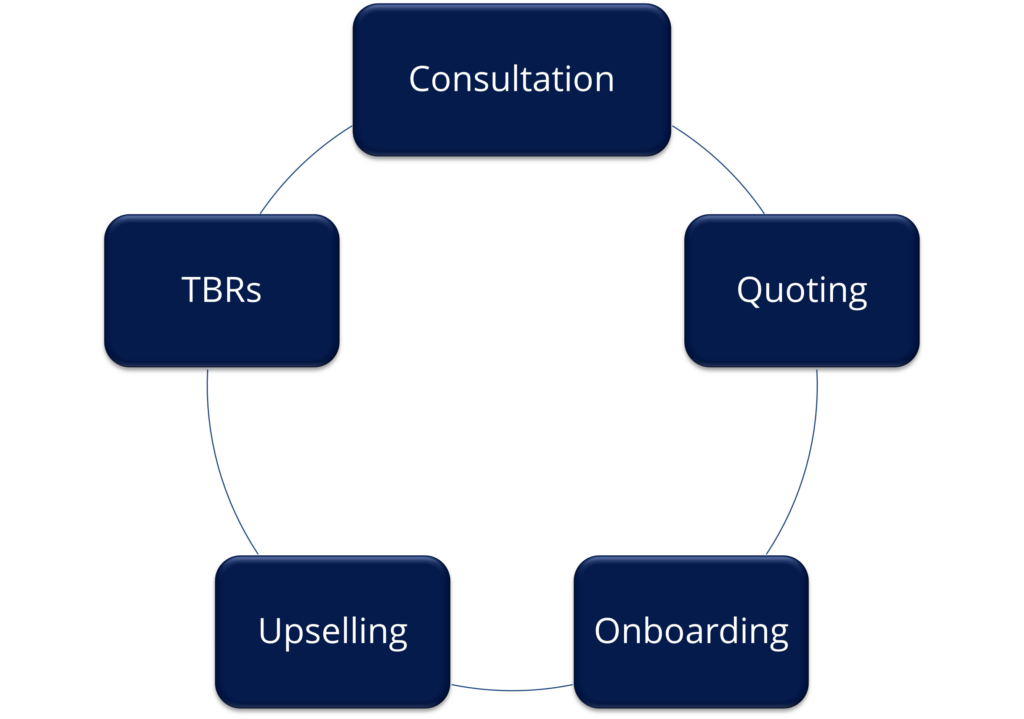
In reality, the sales process is something continuous. Consultation, quoting, onboarding, upselling, and technology business reviews allow you opportunities to continue talking with your customers. You can use all these points to see how you can help your customers solve their problems. Ultimately, this is where you have more opportunities to sell managed services by helping your customers solve their business problems.
It’s crucial to be in constant communication with your customers. To clarify, you must be their business consultant to help your customers navigate technology.
Technology isn’t your customer’s expertise; it’s why they have come to you for help.
The process of selling managed services is not starting finished or linear. Instead, it is circular and continuous. You must continuously be there for your customer’s businesses.
A Network Monitoring system like Domotz can Help you with this process because:
- It enables you to understand what is happening in your customers’ organizations.
- A Network Monitoring Solution like Domotz will discover devices your customer didn’t know they had.
- Learning about new devices is an opportunity for you to offer Managed Service.
- A Network Monitoring Solution helps you assess your client’s network, finding inconsistencies, holes, and improper segmentations.
- Use a Network Monitoring Solution to discover security vulnerabilities.
- Find out about IoT systems you can help.
To summarize, you can use a network monitoring system to satisfy your service level agreements, increase efficiencies, discover new opportunities, and improve customer communications.
How Network Monitoring Plays a crucial role in managed services
Network monitoring plays a crucial role in managed services by providing real-time visibility into your customer’s network infrastructure’s health, performance, and security. On top of that, network monitoring can help proactively prevent issues, performance optimization, SLA compliance, security monitoring, capacity planning, and client reporting.
In summary, network monitoring empowers you to proactively manage your clients’ networks. It enables you to optimize performance, ensure SLA compliance, enhance security, plan for future needs, and maintain open lines of communication with clients. It is critical to effectively manage services, enabling MSPs to deliver reliable and efficient IT support.
